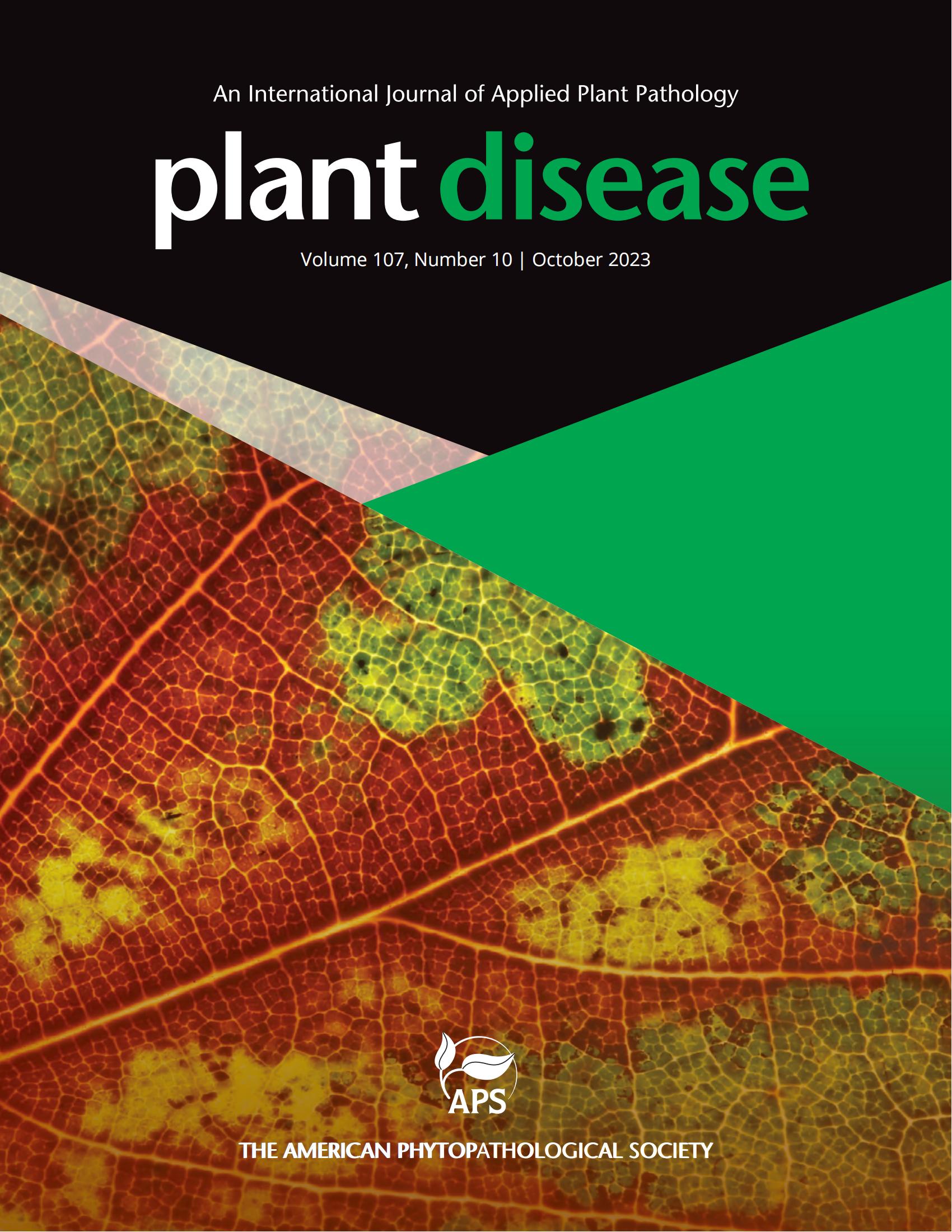智利首次在榕属植物中发现苜蓿花叶病毒。
摘要
无花果(Ficus benjamina),俗称榕树或垂枝无花果,是一种来自东南亚的桑科观赏树种。它是一种常绿树种,世界各地都将其作为室内植物种植,因其有光泽的绿叶、灰色茎干和多枝而备受青睐。在室内种植时,F. benjamina 可以被修剪成小灌木,观赏植物行业中的大多数商业栽培品种都来自运动和扦插繁殖(Chen 等人,2010 年)。2022 年 10 月,在智利圣地亚哥办公室环境中生长的 F. benjamina 的叶片上观察到了苜蓿花叶病毒(AMV)感染的症状,如强烈的亮黄色斑点、斑驳和萎黄病(补充图 1)。采用酶联免疫吸附测定法(ELISA)(Agdia Inc.)使用针对 AMV CP 基因区域的特异引物 AMV-F 和 AMV-R 进行反转录 (RT)-PCR 检测,验证了这些结果(Xu 和 Nie,2006 年)。在所有有症状的叶片样本中都检测到了 AMV,在 RT-PCR 检测中,所有经 ELISA 检测对 AMV 呈阳性的样本都产生了 351-bp 的扩增子。当血清阴性样本或非模板对照被用作 RT-PCR 检测的模板时,没有观察到扩增产物。对三个 RT-PCR 扩增子进行了双向直接测序。对这些序列的 BLAST 分析表明,它们与之前报道的一个 AMV 分离物(GenBank 编号 KX458469)的核苷酸序列相同度为 100%,这证实在 F. benjamina 中检测到了 AMV。这种病原体会导致多个物种发病,包括观赏植物,如 Viburnum tinus L.(Pena 等人,2011 年)、牡丹(Belardi 和 Rubies,2003 年)、凤仙花(Holcomb 等人,2006 年),以及杂草,如 Cayratia japonica (Thunb.) Gagnep、Justicia procumbens L.和 Veronica persica Poir.(Gao 等人,2020 年)。F. benjamina 是智利最受欢迎的室内观赏植物之一,因此苗圃应确保植物不含 AMV,以限制疾病的发生并防止病毒的传播。然而,智利缺乏针对观赏苗圃的具体法规,因此遵守病虫害建议属于自愿行为,只有进口植物材料才需要卫生证书。Ficus benjamina, commonly known as ficus or weeping fig, is an ornamental tree from Southeast Asia in the Moraceae family. It is an evergreen species grown as an interior plant worldwide, prized for its glossy green leaves, gray stem, and multiple branches. F. benjamina can be pruned and kept as a small shrub when grown indoors, with most commercially available cultivars in the ornamental industry derived from sports and propagated cuttings (Chen et al., 2010). In October 2022, symptoms indicative of alfalfa mosaic virus (AMV) infection, such as intense bright yellow spots, mottling and chlorosis were observed in leaves of F. benjamina growing in office environments in Santiago, Chile (supplementary Fig.1). Seven symptomatic and three asymptomatic plants were sampled and traced back to the same plant nursery, and only leaf tissue samples from the symptomatic plants tested positive for the presence of the AMV using enzyme-linked immunosorbent assay (ELISA) (Agdia Inc., Elkhart, IN). These results were verified using reverse transcription (RT)-PCR with specific primers AMV-F and AMV-R, targeting a region of the AMV CP gene (Xu and Nie, 2006). AMV was detected in all symptomatic leaf samples, producing 351-bp amplicons in the RT-PCR assay for all samples that were positive to AMV by ELISA. No amplification product was observed when seronegative samples or non-template control was used as templates in the RT-PCR assays. Three RT-PCR amplicons were directly sequenced in both directions. BLAST analysis of these sequences showed 100% nucleotide sequence identity to an AMV isolate previously reported (GenBank Accession No. KX458469), confirming the detection of AMV in F. benjamina. This pathogen causes disease in several species, including ornamentals plant such as Viburnum tinus L. (Peña et al., 2011), peony (Belardi and Rubies, 2003), phlox (Holcomb et al., 2006), and weeds such as Cayratia japonica (Thunb.) Gagnep, Justicia procumbens L. and Veronica persica Poir. (Gao et al., 2020). F. benjamina is among the most popular ornamental indoor plants in Chile, so nurseries should ensure AMV-free plants to restrict disease incidence and prevent the spread of this virus. However, Chile lacks specific regulations for ornamental nurseries, making adherence to pest and disease recommendations voluntary, and only imported plant material requires a sanitary certificate.

 求助内容:
求助内容: 应助结果提醒方式:
应助结果提醒方式:


